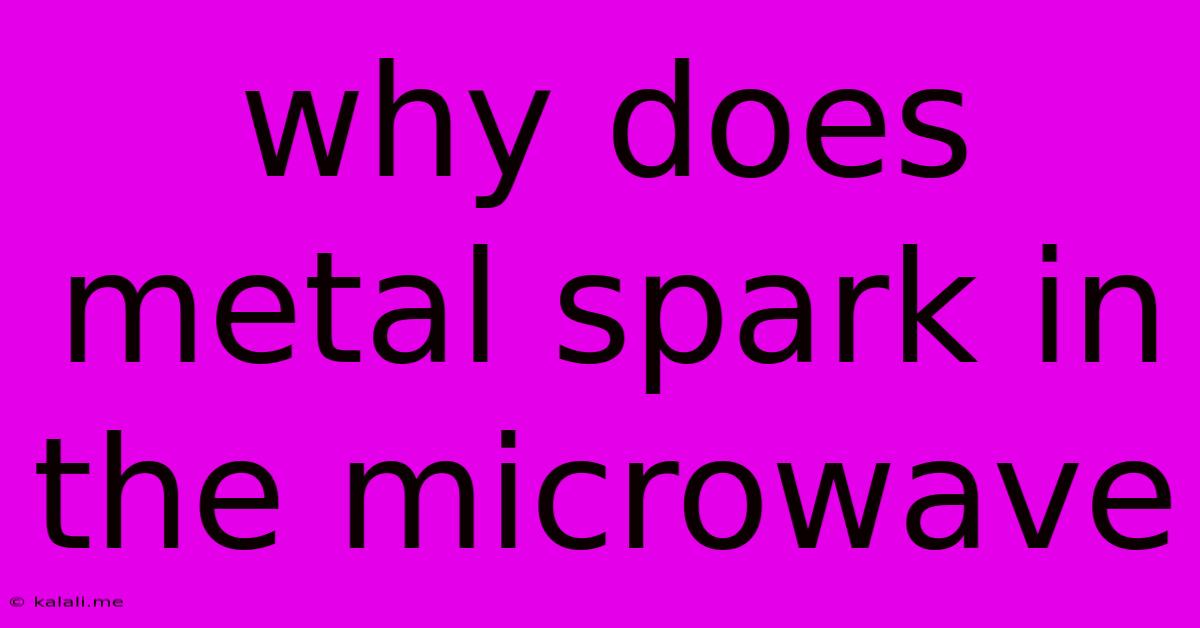Why Does Metal Spark In The Microwave
Kalali
May 30, 2025 · 3 min read

Table of Contents
Why Does Metal Spark in the Microwave? Understanding the Science Behind the Sparks
Have you ever been tempted to put a metal object in your microwave? We strongly advise against it! The resulting sparks can be quite a spectacle, but they also pose a serious fire hazard. This article will explain the science behind why metal sparks in a microwave, demystifying this common kitchen curiosity and highlighting the safety risks involved. The short answer involves the interaction of microwaves with the free electrons in metal.
Microwaves work by exciting water molecules in food. These excited molecules create heat, cooking your meal. However, metals have a unique interaction with microwaves due to their free electrons. This interaction is the key reason why putting metal in the microwave is a bad idea and can lead to dangerous sparks.
The Role of Free Electrons
Unlike other materials, metals possess a "sea" of free electrons—electrons not bound to specific atoms and able to move freely throughout the metal's structure. When microwaves enter a microwave oven, they create an oscillating electric field. This oscillating field interacts with the free electrons in the metal object.
The electric field forces these free electrons to oscillate violently at the same frequency as the microwave radiation. This rapid oscillation generates a current within the metal. This current is not always a smooth flow. Instead, it can be highly localized, concentrated in sharp points or edges of the metal object. This is crucial in understanding the sparking phenomenon.
The Spark Generation
The intense oscillation of electrons creates a very high-energy situation. This energy is often released as heat, but in situations with sharp points or edges, the concentration of energy is even more significant. This high concentration of energy overcomes the dielectric strength of the surrounding air.
The dielectric strength is the maximum electric field strength that a material can withstand before it breaks down and becomes conductive. When the electric field generated by the oscillating electrons exceeds the dielectric strength of the air, the air becomes ionized. This ionization is what we see as a spark – a visible discharge of electricity through the air. Essentially, the air itself briefly becomes a conductor, allowing a current to flow.
Beyond Sparks: Potential Dangers
While the sparks themselves might seem harmless, they represent a much larger safety concern. The intense heat generated by the sparking can ignite flammable materials near the metal object, leading to a fire. Furthermore, the arcing can damage the magnetron, the component responsible for generating the microwaves, potentially rendering your microwave unusable.
Therefore, it's crucial to avoid placing any metal objects, including aluminum foil, metal utensils, or even metallic containers, inside your microwave oven. Always check your food for any hidden metal objects before microwaving.
Alternatives to Metal in Microwave Cooking
If you're looking for a way to heat something that's normally contained in a metal container, consider using microwave-safe alternatives like glass or plastic containers. These materials don't have free electrons and won't interact with microwaves in the same dangerous way.
By understanding the interaction of microwaves and free electrons in metals, we can appreciate why metal sparking in a microwave is not only a spectacular sight but also a potentially hazardous situation. Remember: safety first! Always keep metal out of your microwave.
Latest Posts
Latest Posts
-
How To Remove Bars On Windows
May 31, 2025
-
What It Means At Most In Math
May 31, 2025
-
How To Say On In Russian
May 31, 2025
-
Is Hell No A Bad Word
May 31, 2025
-
How Do You Say Carpet In Spanish
May 31, 2025
Related Post
Thank you for visiting our website which covers about Why Does Metal Spark In The Microwave . We hope the information provided has been useful to you. Feel free to contact us if you have any questions or need further assistance. See you next time and don't miss to bookmark.